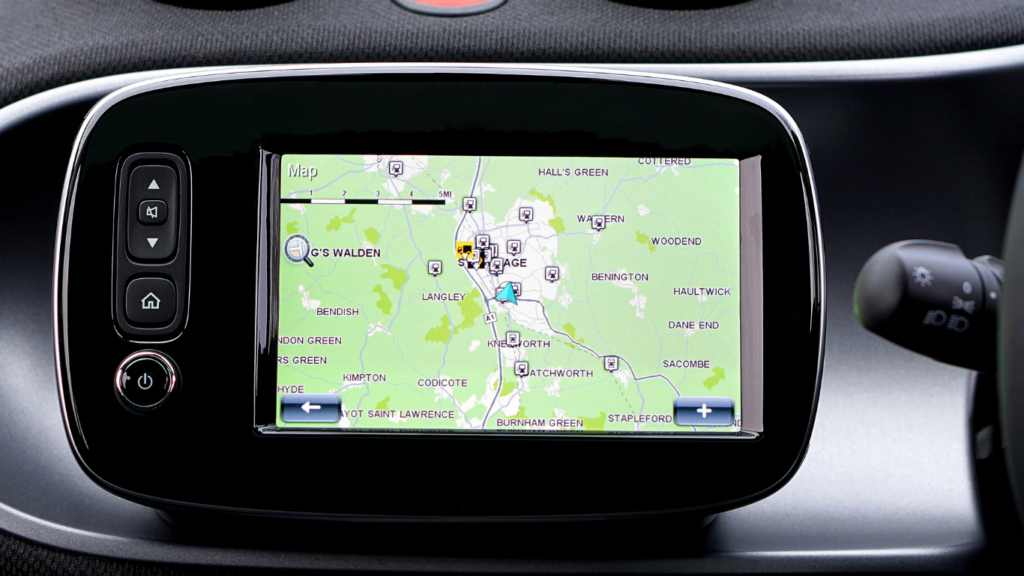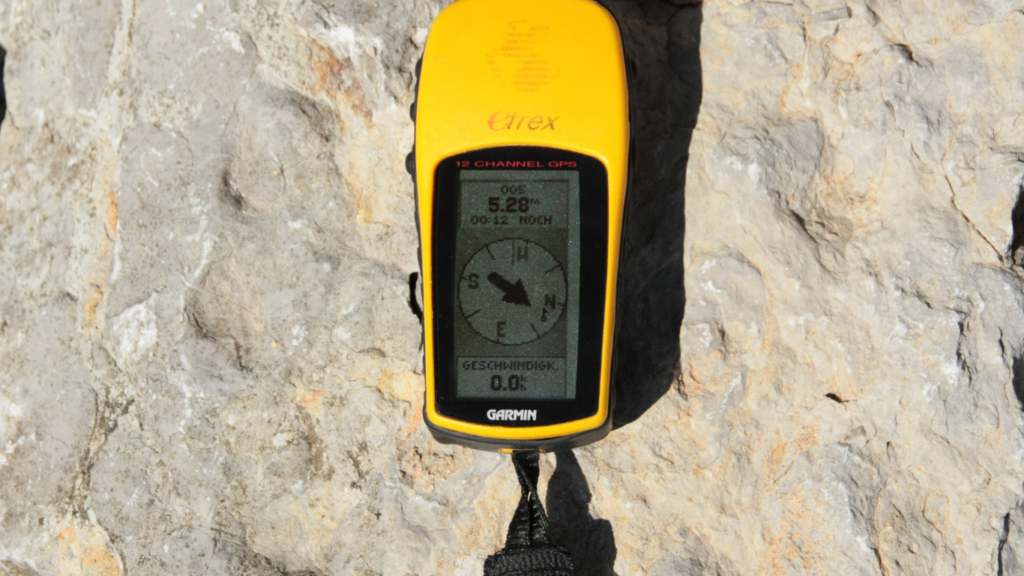Importance of a Reliable GPS Device
Hitting the trails demands a dependable GPS device for several reasons. First, it ensures safety by providing accurate location data, which is crucial for navigating unfamiliar terrain. According to the National Park Service, over 300 search and rescue operations in parks each year involve hikers who lost their way.
Next, many GPS devices offer real-time updates on weather conditions. Conditions can change rapidly in the wilderness, and having this information helps in making timely decisions. For instance, storm alerts give hikers and adventurers the chance to seek shelter.
Furthermore, a reliable GPS device enhances route planning. Modern devices include detailed maps and waypoints. These features allow you to plan your route efficiently and avoid hazardous areas. Devices like the Garmin Montana 700i come with preloaded topographic maps, aiding in precise navigation.
In addition, battery life is a critical factor. A robust GPS device promises long battery life, ensuring it remains operational during extended outings. Devices such as the Garmin GPSMAP 66sr offer up to 36 hours of battery life in GPS mode.
Finally, many GPS devices support emergency communication. Devices with two-way satellite messaging enable sending distress signals when outside cellular range. For example, the Garmin inReach Mini supports interactive SOS capabilities, providing a reliable communication channel during critical situations.
Investing in a dependable GPS device ensures safety, provides crucial updates, supports efficient route planning, offers extended battery life, and facilitates emergency communication, making it an essential tool for any adventurer.
Top Features to Look for in Trail-Ready GPS Devices
Choosing the right GPS device for trail adventures requires understanding key features that enhance safety and usability. These features are essential for making informed decisions.
Durability and Waterproof Rating
Durability matters when exploring rough terrains. Trail-ready GPS devices need sturdy construction to withstand drops and impacts. Many devices, like the Garmin GPSMAP 66i, meet military standards for shock resistance. Waterproof ratings are also crucial. Devices with IPX7 ratings, for example, can handle submersion in water up to 1 meter for 30 minutes, ensuring functionality in heavy rain or accidental dips.
Battery Life
Battery life impacts your adventures’ length and safety. Devices with extended battery life, such as the Garmin GPSMAP 66sr, which offers up to 36 hours in GPS mode, are invaluable. Some models come with energy-saving settings, prolonging the device’s operational time. Solar charging features, found in the Garmin Instinct Solar, provide added peace of mind for extended trips.
Mapping and Navigation Features
Detailed maps and accurate navigation are vital. Devices should offer preloaded topographic maps, customizable waypoints, and turn-by-turn directions. The Garmin Montana 700i, for instance, includes BirdsEye Satellite Imagery and a dual-grid coordinate system for precise navigation. Multiple map compatibility, such as topographic, marine, and road maps, is advantageous for diverse activities.
User Interface and Ease of Use
A user-friendly interface simplifies navigation tasks. Intuitive touchscreen interfaces and responsive buttons enhance the experience. Devices like the Garmin Oregon 750t feature sunlight-readable displays and customizable dashboards, making them easier to operate in various conditions. Simple menu structures and quick access to frequently used functions minimize complications in critical moments.
Connectivity Options
Connectivity features expand a device’s usefulness. Bluetooth and Wi-Fi connectivity, present in models like the Garmin GPSMAP 66i, enable data synchronization with smartphones and computers. Satellite communication options, such as those in the Garmin inReach Mini, offer SOS capabilities and two-way messaging in remote areas, providing additional safety measures.
Leading GPS Devices on the Market

Choosing the right GPS device can enhance your outdoor adventure experience. Below are some top trail-ready GPS devices with exceptional features.
Garmin GPSMAP 66i
The Garmin GPSMAP 66i stands out with its rugged durability and extended battery life. It offers preloaded topographic maps and satellite communication for emergency SOS, making it ideal for backcountry expeditions. With built-in navigation sensors, it ensures accurate tracking even in challenging terrains.
Suunto 9 Baro
The Suunto 9 Baro combines GPS functionality with advanced sports tracking features. It’s known for its long battery life, reaching up to 120 hours in GPS mode with intelligent battery management. Altimeter and barometer capabilities add to its precision in altitude tracking, essential for mountaineers.
Garmin eTrex 32x
Garmin’s eTrex 32x provides reliable functionality in a compact form. It includes a three-axis compass, barometric altimeter, and preloaded TopoActive maps. Its affordability and usability in diverse environmental conditions make it a go-to for hikers and cyclists seeking a straightforward GPS solution.
Magellan TRX7 CS
The Magellan TRX7 CS excels in off-road mapping and navigation. Featuring a 7-inch touchscreen, it comes with over 160,000 preloaded trails and high-resolution cameras for geotagging waypoints. It’s tailored for off-roading enthusiasts who need detailed trail information and user-generated content sharing.
User Reviews and Experiences
User reviews shine a light on real-world performance, offering vital insights into trail-ready GPS devices.
Pros and Cons from Users
Pros:
- Garmin GPSMAP 66i: Users highlight its rugged construction and reliable battery life. Mapping accuracy receives consistent praise.
- Garmin inReach Mini: The compact size and emergency communication features are lauded. It’s easy for adventurers to carry without added bulk.
- Suunto 9 Baro: Users appreciate its extended battery life. The sports tracking features are particularly noted by outdoor athletes.
- Garmin eTrex 32x: This model’s user-friendly interface and reliable performance in diverse conditions receive positive reviews.
- Magellan TRX7 CS: The large touchscreen and preloaded trails enhance off-road navigation. Users find it effective for off-road adventures.
Cons:
- Garmin GPSMAP 66i: Some users report a steep learning curve. Initial setup might be challenging for novices.
- Garmin inReach Mini: The small screen size may be a drawback when viewing detailed maps.
- Suunto 9 Baro: A few users mention the device’s occasional syncing issues with the app.
- Garmin eTrex 32x: Limited advanced mapping features restrict its use for complex navigation.
- Magellan TRX7 CS: The device’s larger size can be cumbersome for hikers used to more compact units.
Real-Life Scenarios and Feedback
Hikers frequently mention the Garmin GPSMAP 66i‘s performance in extreme weather conditions. One user cited the device’s robustness during a snowstorm hike, noting its reliable signal and mapping capabilities.
Climbers and backcountry skiers often rely on the Garmin inReach Mini. Multiple reviews highlight instances where emergency communication features facilitated rescues.
Trail runners and endurance athletes benefit from the Suunto 9 Baro. One athlete recounted a 24-hour ultra-marathon, complimenting the watch’s battery life and accuracy in tracking their path.
Casual hikers find the Garmin eTrex 32x essential for weekend trips. Users frequently highlight its ease of use and reliable waypoint marking on familiar trails.
Off-road enthusiasts extensively use the Magellan TRX7 CS. Feedback often includes its performance in dense forests and remote trails, where preloaded maps provide critical guidance.
Price vs. Performance: Finding the Best Value
Choosing a trail-ready GPS device involves balancing cost and functionality. High-end models often come with a slew of features, but they’re not always necessary for every adventurer. Understanding what you need and what you can afford helps in making an informed decision.
Budget-Friendly Options
Garmin eTrex 32x and Magellan TRX7 CS are excellent choices for those on a budget. These devices offer essential features like preloaded maps, waypoint tracking, and user-friendly interfaces. eTrex 32x, priced around $299, provides reliable GPS and GLONASS satellite reception. Magellan TRX7 CS, costing approximately $549, adds off-road navigation support and a built-in 5MP camera.
Mid-Range Devices
For those willing to spend a bit more, mid-range models deliver additional functionalities without breaking the bank. Garmin GPSMAP 66i is a solid option here, offering inReach technology for satellite communication and advanced mapping capabilities. It typically costs around $599. Suunto 9 Baro, another contender, combines GPS with fitness tracking features for about $499.
High-End Models
Premium GPS devices cater to extreme adventurers needing top-tier performance. Garmin inReach Mini, around $349, offers robust satellite communication in a compact design, making it ideal for harsh environments. The Garmin GPSMAP 66sr, at $599, includes multi-band GPS technology, ensuring superior accuracy and faster signal acquisition.
Cost-Performance Analysis
When selecting a GPS device, consider where you’ll be using it most and what features are vital. Budget-friendly options like the eTrex 32x are perfect for casual hikers. Mid-range devices, including the GPSMAP 66i and Suunto 9 Baro, cater to serious adventurers needing advanced functionalities. High-end models, such as the inReach Mini and GPSMAP 66sr, are tailored for demanding environments where reliability is critical.
Ultimately, finding the right balance between price and performance ensures you get the best value for your specific needs.




